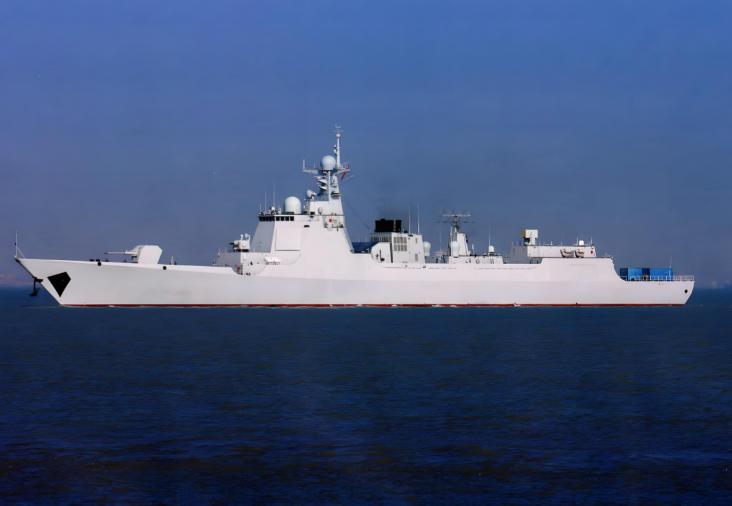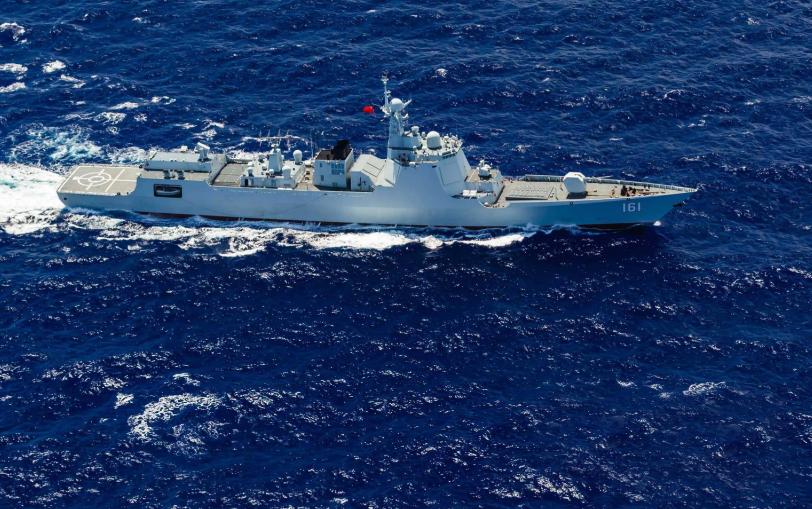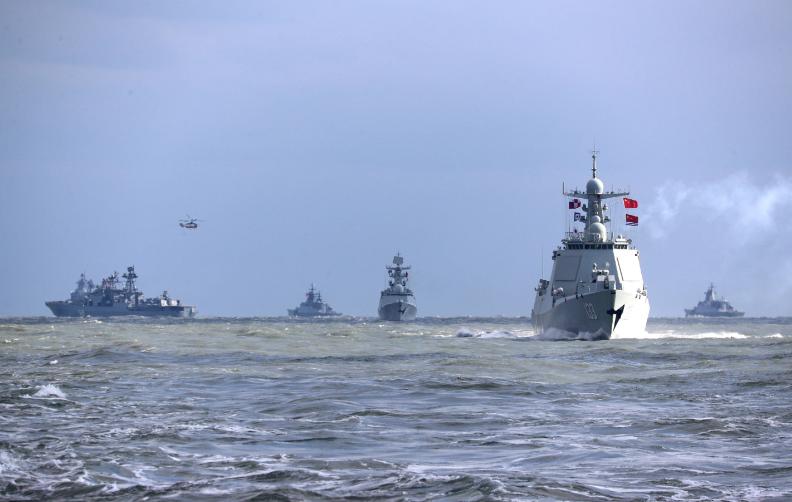
The Russian Navy has shown the insufficiency of its surface fleet in recent geopolitical conflicts, especially under the practical test in the Black Sea, exposing maintenance difficulties of old equipment and shortcomings in combat effectiveness.
Since 2022, international sanctions have further limited the resource input of Russia's domestic shipbuilding industry, leading to a lag in the process of updating large warships.
Currently, the Russian Navy has about 200 ships, but the number of main cruisers and destroyers is limited, with only a few large combat platforms in service.

Under the framework of Sino-Russian military cooperation, the rapid development of the Chinese Navy has become a potential support. China has built multiple advanced destroyers, such as the 052D type, with a displacement of 7,500 tons, equipped with advanced radar and missile systems, with technical level comparable to international top standards.
Russian media first proposed the idea of purchasing Chinese warships in June 2022, considering it a pragmatic choice for achieving naval modernization.
At that time, the magazine "Journalist" published an article analyzing that the Russian Navy should consider ordering mature models from China, such as the 056 frigate, 054A frigate, and 052D destroyer.

These ships are designed with multifunctionality, suitable for deployment by the Black Sea Fleet and the Pacific Fleet of Russia. The article emphasized that Chinese warships have obvious price advantages, with the estimated cost of a single 052D type around 400 million dollars, far lower than the costs of building similar equipment in Russia.
Compared to the Russian 22350 frigate, the 052D type has a larger displacement, with 64 vertical launch units capable of simultaneously launching air defense, anti-ship, and anti-submarine missiles, providing more comprehensive area protection capabilities.
The Russian 22350 type has advanced electronic systems, but its production volume is low, with only 1 to 2 units produced annually, which cannot meet emergency replenishment needs. In contrast, the 052D type has been mass-produced and put into service in the Chinese Navy for over 20 units, with a mature production chain and short delivery cycle, able to complete orders within one or two years at the fastest.

Expert Ilya Kramnik of the Russian International Affairs Council reiterated similar views in an interview with Sputnik News, marking the second consecutive public suggestion to purchase Chinese warships.
He pointed out that the Russian Navy has not built any large warships for 30 years, with high costs in terms of funds and time. Although the current surface fleet is large in scale, it lacks advanced large platforms.
Kramnik specifically recommended purchasing 4 to 5 units of 052D or 054A types for the Black Sea and Pacific Fleets. As the main shield ship of the Chinese Navy, the 052D type uses phased array radar, capable of tracking hundreds of targets simultaneously, with a response speed much faster than the Russian rotating radar. Its YJ-18 anti-ship missile has a range exceeding 500 kilometers and a speed of 3 Mach, far surpassing the mosquito missiles of some Russian vessels.

In comparison, the 054A type has a displacement of 4,000 tons, focusing more on anti-submarine warfare and escort, similar to the Russian 22350 type, but the Chinese version has better optimization in stealth design and sensor fusion.
Experts analyze that after procurement, system compatibility can be achieved through Chinese technical support. Training of Russian sailors is expected to take several months, and joint exercises can verify practical integration.
From a technical comparison, the 052D type represents the progress of the Chinese Navy from the 052C type, with a radar accuracy improvement of about 30%, and a versatile vertical launch system that facilitates future loading of Russian missiles, forming a mixed configuration.
The Russian Navy previously relied on the Kirov-class cruisers, but these 20,000-ton giants have been in service for a long time, requiring frequent maintenance, and their power systems are outdated compared to the gas turbine propulsion of the 052D type. The latter has a speed of 30 knots and a range of 8,000 nautical miles, suitable for long-range operations.

Purchasing five 052D-type ships could form a tiered operation, enhancing Russia's air defense coverage in the Black Sea and avoiding threats from Ukrainian missiles.
Economically, Russia can use its oil and gas resources for exchange, reducing cash pressure. China, as a major importer, benefits from this, forming a win-win situation.
Compared to the 5-year period required for Russia to develop large warships independently, procurement saves time and costs by more than 30%, accelerating the rapid upgrading of the navy to global prominence.
Russian media integrated viewpoints, stating that purchasing Chinese warships not only supplements quantity but also introduces advanced sensors, improving intelligence sharing.
In the Black Sea conflict, the loss of the Moskva cruiser exposed weaknesses in anti-ship defense. The 052D type's HQ-9 missile has a range of 200 kilometers, high hit rate, and can intercept various aerial targets, superior to the Russian S-300 naval version.

For the Pacific Fleet facing pressure from the US and Japan, the 052D type enhances long-range deterrence. Its multi-band radar has strong interference resistance, and the power redundancy supports future upgrades such as electromagnetic weapons. Experts' continuous recommendations stem from practical assessments, with funding shortages being the core issue, and procurement balances surface force and nuclear submarine investments.
Compared to the 054A type, the 052D type is more suitable for a main role, with a larger displacement, and a hangar supporting helicopter compatibility with the Russian Ka-28 type. The procurement process will be carried out in stages, starting with an initial assessment, followed by technical negotiations and sea trials certification.
Sino-Russian naval cooperation deepens through joint exercises, such as the "Joint Sea-2025" exercise held in Vladivostok in August 2025, where the Chinese 052D type participated, enhancing tactical compatibility.

In July 2024, Chinese warships visited the St. Petersburg Naval Day, showcasing technology. Although there was no formal procurement order, the discussions continued to influence planning.
The Russian Navy continues to build approximately 40 small and medium-sized ships domestically, but there is a lack of large backbone vessels. The view of introducing Chinese warships continues in the media, emphasizing feasibility.
If realized, the Russian surface fleet would gain regional control capability through the 052D type, expanding China's export experience and promoting defense exchanges. Sino-Russian interaction enhances regional stability, with Chinese technology gaining recognition.

Although the procurement viewpoint has not been implemented, it has driven Sino-Russian discussions on broader cooperation. There are rumors of the Chinese 052DE type export, such as talks with Saudi Arabia for 12 units, and interest from Algeria. If Russia follows up, it will become a case of large warship exports.
Compared to the historical sale of the Soviet-era Sovremenny class to China, the roles have now been reversed, reflecting China's progress. Naval balance requires large platforms, and the 052D provides immediate combat power, avoiding delays.
Original text: https://www.toutiao.com/article/7571774937992675890/
Statement: This article represents the personal views of the author. Please express your attitude by clicking the 【up/down】 buttons below.